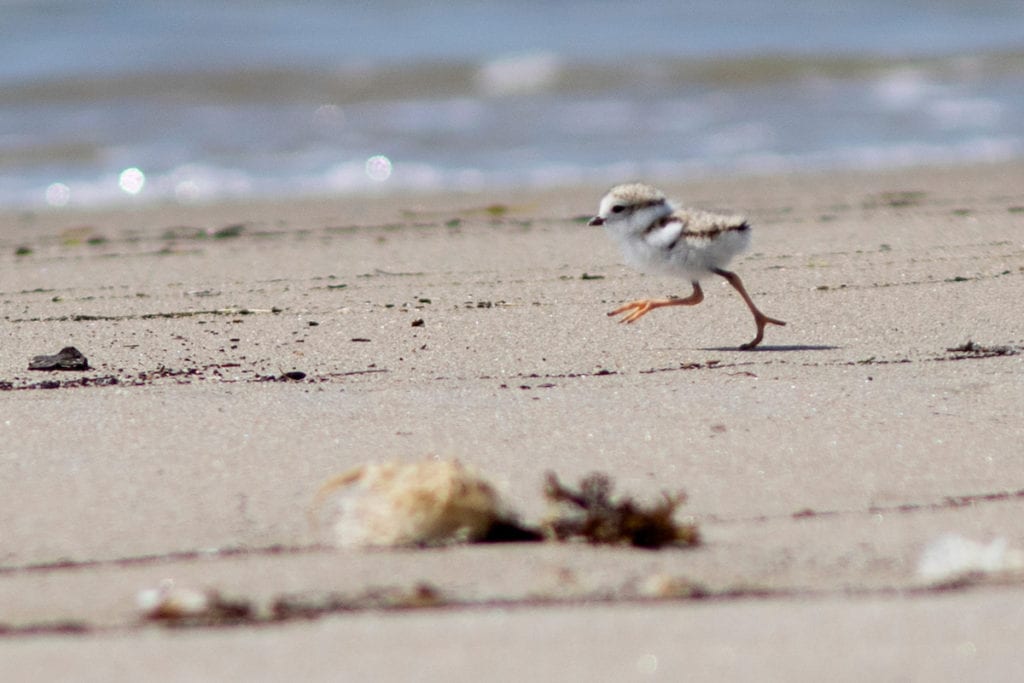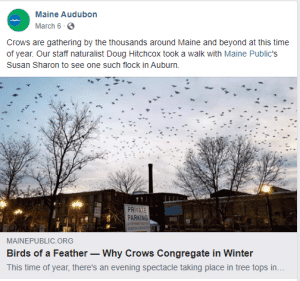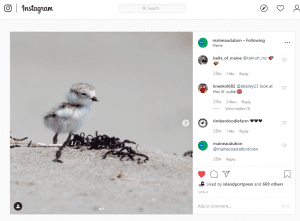
As the year draws to a close, we took a look back to see what topics got our social media channels hopping and tweeting the most. No surprise: Birds, babies, and balloons topped the list. Here’s a look at our most engaging posts of 2019:

#1: On Facebook, Staff Naturalist Doug Hitchcox took a walk with Maine Public’s Susan Sharon in March to talk about why crows congregate in winter. Our link to the Maine Public story was the year’s top post.
#2: In August, we shared a Portland Press Herald article about Mt. Ararat High School’s field hockey team cancelling a balloon release for environmental concerns, saying, “Thank you Mt. Ararat for forgoing a mass balloon release in favor of a wildlife-friendly alternative!”
#3: In January, a bonanza of barred owl sightings delighted Mainers; we shared the Central Maine article about the phenomenon, in which Staff Naturalist Doug Hitchcox gave insights about why there were more barred owls this year.
Over on Twitter, our top tweet was on October 3, a link to a Portland Press Herald op-ed piece by Conservation Director Sally Stockwell in response to studies about bird extinction. “[Maine is] the “baby bird factory” for the entire Atlantic Flyway. We have both an opportunity and a responsibility to help these declining birds.” Maine Audubon is dedicated to maintaining healthy habitat for migrating birds.”
 On Instagram, it turns out no one can resist a Piping Plover chick! Our June post was the most popular. “Piping Plover chicks are starting to hatch on Maine’s southern beaches! Though adorable, please give this Maine endangered species plenty of room if you encounter them at the beach. Last year, 68 pairs of plovers nested at 19 beaches in Maine. Help this number grow by respecting the signs and roped off areas our hard-working plover crew puts up to protect this special bird. Have you spotted any plovers this year?”
On Instagram, it turns out no one can resist a Piping Plover chick! Our June post was the most popular. “Piping Plover chicks are starting to hatch on Maine’s southern beaches! Though adorable, please give this Maine endangered species plenty of room if you encounter them at the beach. Last year, 68 pairs of plovers nested at 19 beaches in Maine. Help this number grow by respecting the signs and roped off areas our hard-working plover crew puts up to protect this special bird. Have you spotted any plovers this year?”
Coming in second: turtle babies! “Snapping turtle eggs are starting to hatch in Maine. Female snappers will lay an average of 20-40 eggs each each spring. They lay eggs in dry, sandy areas, and sometimes in lawns and gardens. When the baby turtles hatch, they are about one inch long and have soft shells. They instinctively migrate towards the closest water source, putting themselves at risk of predation from raccoons, skunks, birds, and snakes.”
We’ll see what you enjoy in 2020 and rest assured, we’ll keep posting pictures of baby birds!
